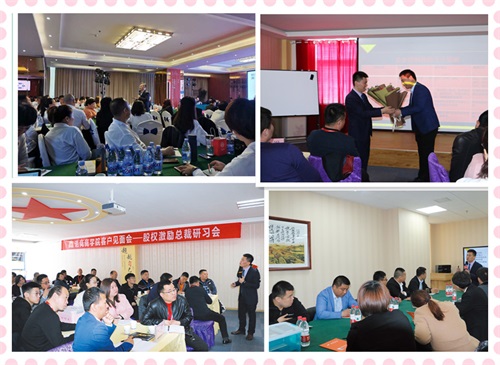

股權(quán)知識
股權(quán)激勵Equity incentive
股權(quán)架構(gòu)設(shè)計的底層邏輯和通用措施
發(fā)布時間:2024-07-09 來源:http://nequ.com.cn/
有關(guān)底層邏輯的進(jìn)一步闡述
Further elaboration on the underlying logic
1. 控制權(quán)與所有權(quán)的平衡:在設(shè)計股權(quán)架構(gòu)時,,需要考慮如何通過不同類別的股份(如A類和B類股票)來實現(xiàn)控制權(quán)與所有權(quán)的平衡。例如,,B類股票可能賦予創(chuàng)始人或管理層更多的投票權(quán),,而A類股票則提供給投資者以獲取收益,。
1. Balance between control and ownership: When designing an equity structure, it is necessary to consider how to achieve a balance between control and ownership through different types of shares (such as Class A and Class B stocks). For example, Class B stocks may give founders or management more voting rights, while Class A stocks provide investors with opportunities to earn returns.
2. 動態(tài)激勵機制:股權(quán)激勵計劃應(yīng)設(shè)計為動態(tài)的,可以根據(jù)員工的表現(xiàn)和公司的發(fā)展階段進(jìn)行調(diào)整,。例如,,隨著公司估值的增長,期權(quán)的行權(quán)價格可能需要相應(yīng)提高,。
2. Dynamic incentive mechanism: Equity incentive plans should be designed as dynamic and can be adjusted based on employee performance and the company's development stage. For example, as the company's valuation increases, the exercise price of options may need to be correspondingly raised.
3. 風(fēng)險與收益的對等:設(shè)計股權(quán)架構(gòu)時,應(yīng)確保股東承擔(dān)的風(fēng)險與其可能獲得的收益相匹配,。這可能涉及到對不同股東類別的權(quán)益進(jìn)行差異化設(shè)計,。
3. Equivalence of risk and return: When designing the equity structure, it should be ensured that the risks borne by shareholders match the potential returns they may receive. This may involve differentiated design of equity for different categories of shareholders.
4. 法律合規(guī)性的重要性:股權(quán)架構(gòu)必須嚴(yán)格遵守相關(guān)法律法規(guī),,包括但不限于公司法、證券法以及稅法,。這要求設(shè)計者具備跨領(lǐng)域的法律知識,。
4. The importance of legal compliance: The equity structure must strictly comply with relevant laws and regulations, including but not limited to company law, securities law, and tax law. This requires designers to possess cross disciplinary legal knowledge.
5. 適應(yīng)性與前瞻性:股權(quán)架構(gòu)設(shè)計應(yīng)具備一定的適應(yīng)性,,以應(yīng)對市場和技術(shù)的快速變化。同時,,設(shè)計應(yīng)具有前瞻性,,考慮公司長遠(yuǎn)發(fā)展的需求。

5. Adaptability and foresight: The equity structure design should have a certain degree of adaptability to cope with the rapid changes in the market and technology. At the same time, the design should be forward-looking and consider the long-term development needs of the company.
通用措施的詳細(xì)化和專業(yè)化
Detailed and specialized general measures
1. 股權(quán)分配策略:在股權(quán)分配時,,應(yīng)考慮創(chuàng)始團(tuán)隊的貢獻(xiàn)、投資者的期望以及員工的激勵需求,。例如,,創(chuàng)始團(tuán)隊可能獲得較大比例的股份,,以體現(xiàn)其對公司的貢獻(xiàn)。
1. Equity distribution strategy: When distributing equity, consideration should be given to the contributions of the founding team, the expectations of investors, and the incentive needs of employees. For example, the founding team may acquire a significant proportion of shares to demonstrate their contribution to the company.
2. 股權(quán)激勵的定制化:股權(quán)激勵計劃應(yīng)根據(jù)員工的角色、職責(zé)和潛在貢獻(xiàn)進(jìn)行定制,。例如,對于關(guān)鍵技術(shù)人才,,可能提供更多的股權(quán)激勵,。
2. Customization of equity incentives: Equity incentive plans should be customized based on employees' roles, responsibilities, and potential contributions. For example, for key technical talents, more equity incentives may be provided.
3. 多層次股權(quán)結(jié)構(gòu):設(shè)計多層次的股權(quán)結(jié)構(gòu),,以滿足不同股東的需求。例如,,優(yōu)先股股東可能享有優(yōu)先分紅權(quán),,而普通股股東則享有更多的投票權(quán)。
3. Multi level equity structure: Design a multi-level equity structure to meet the needs of different shareholders. For example, preferred shareholders may have priority dividend rights, while common shareholders have more voting rights.
4. 股東協(xié)議的詳盡條款:股東協(xié)議應(yīng)包含詳盡的條款,,明確股東的權(quán)利、義務(wù),、決策機制以及退出機制等,。
4. Detailed provisions of the shareholder agreement: The shareholder agreement should include detailed provisions that clarify the rights, obligations, decision-making mechanisms, and exit mechanisms of shareholders.
5. 融資策略的多元化:在設(shè)計股權(quán)架構(gòu)時,,應(yīng)考慮多元化的融資策略,包括債務(wù)融資,、股權(quán)融資以及混合融資等,。
5. Diversification of financing strategies: When designing equity structures, diversified financing strategies should be considered, including debt financing, equity financing, and mixed financing.
6. 稅務(wù)規(guī)劃的專業(yè)咨詢:聘請稅務(wù)顧問,對股權(quán)架構(gòu)進(jìn)行稅務(wù)優(yōu)化,,以降低稅負(fù)并提高資本效率。
6. Professional consultation on tax planning: Hire tax consultants to optimize the equity structure for tax purposes, in order to reduce tax burden and improve capital efficiency.
7. 退出機制的明確設(shè)計:設(shè)計清晰的股東退出機制,,包括但不限于股權(quán)回購,、股權(quán)轉(zhuǎn)讓以及IPO等,。
7. Clear design of exit mechanism: Design a clear shareholder exit mechanism, including but not limited to equity repurchase, equity transfer, and IPO.
本文由山東頂層架構(gòu)設(shè)計友情奉獻(xiàn).更多有關(guān)的知識請點擊: http://nequ.com.cn真誠的態(tài)度.為您提供為全面的服務(wù).更多有關(guān)的知識我們將會陸續(xù)向大家奉獻(xiàn).敬請期待.
This article is a friendly contribution from Shandong's top-level architecture design. For more related knowledge, please click: http://nequ.com.cn Sincere attitude. We provide you with comprehensive services. We will gradually contribute more relevant knowledge to everyone. Please stay tuned
本站聲明
本網(wǎng)站為非營利性網(wǎng)站,旨在宣揚股權(quán)知識,,交流職業(yè)學(xué)習(xí)心得,。網(wǎng)站內(nèi)部分文章來自其它網(wǎng)站,只做交流學(xué)習(xí)之用,。相應(yīng)的權(quán)力均屬于原權(quán) 力人,如權(quán)利人認(rèn)為不妥,,請來電來函說明,,本網(wǎng)站隨既停止或使用,謝謝合作,! 13698613138
13698613138
微信公眾號

掃碼獲知更多知識

抖音二維碼
山東股章企業(yè)管理顧問有限公司 備案號:魯ICP備19050574號-2 網(wǎng)站建設(shè)·推廣運營 網(wǎng)站地圖 XML TXT

截屏,,微信識別二維碼